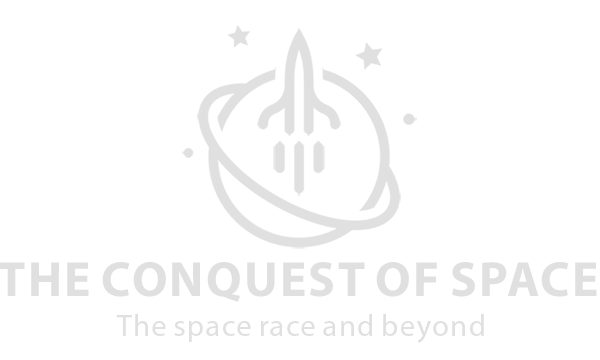The Greatest Spacecraft Never Built? The Space Tug
Nixon Wakes Up NASA in the Middle of a Dream
How often is it that we talk about the “golden era” of something? Generally, that tends to infer that the best of something is behind us. It doesn’t mean that great things won’t, or can’t be accomplished in the future, only that the high-water mark once reached may never be reached again, so it was in the decade of the 1960s. It was the golden era of humankind’s endeavor to reach the stars. It started with a speech by then-President John F. Kennedy before a crowd at Rice University’s stadium on September 12, 1962. It ended on the night of November 5, 1968, with the election of Richard Nixon. It was just nine months until the space race would be over, culminating with the landing on the moon on July 20, 1969. Momentum was carrying the space program forward towards that goal on footprints on the moon, but the finish line was within reach, and the downhill slide to the end of that golden era was imminent.
Towards the end of Johnson’s presidency, he knew what was coming. While Johnson had remained firmly committed to a moon landing before the end of the decade and never wavered in his support, the handwriting for what a post-Apollo NASA would look like began to emerge. With the final hardware bought and paid for, NASA’s funding began to drop ahead of the moon landing. In what would be a foretelling statement of the future of NASA, Johnson told astronaut Wally Schirra on a visit to the New Orleans assembly plant for the Saturn V that “It’s too bad. We have this great capability, but instead of taking advantage of it, we’ll probably just piss it away”. NASA had to know but was in denial. After the moon, there would be a space station, moon bases, and of course, Mars. NASA continued to dream of the possibilities of what could be in space. One of NASA’s big dreams included perhaps the most essential space concept you never heard of, the Space Tug.
As the Nixon administration sharpened its scissors, ready to cut away 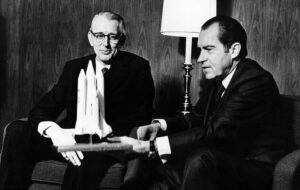 at NASA’s budget and its bold plans for the future, the story of what might have been lies in the dust-covered papers of studies and projects boxed up in archives. So pervasive was the Nixon plan to transform the relatively young space program that its model still exists today. Fifty years after his election, the Presidents and Congress that followed have continued to fund NASA not on a vision but with a limited pool of money that the agency must stretch to maintain its broad array of current and future missions. Enough money to get some significant feats accomplished, but not enough to take the next giant leaps in human spaceflight.
at NASA’s budget and its bold plans for the future, the story of what might have been lies in the dust-covered papers of studies and projects boxed up in archives. So pervasive was the Nixon plan to transform the relatively young space program that its model still exists today. Fifty years after his election, the Presidents and Congress that followed have continued to fund NASA not on a vision but with a limited pool of money that the agency must stretch to maintain its broad array of current and future missions. Enough money to get some significant feats accomplished, but not enough to take the next giant leaps in human spaceflight.
Let’s step back to 1968. With the moon landing in sight, those dreams of what would be next were big. There was no shortage of ideas; there was hope for a human-crewed Mars mission, a Venus flyby, a National Astronomical Space Observatory (Hubble before Hubble). Then there were various capabilities plans for future lunar missions. One was the Lunar Flying Unit, a device capable of carrying an astronaut a few miles from the lander. Later, there would be a host of ideas for leveraging the LEM in various configurations, called the Lunar Derivatives. All of these ideas were born of the rapid progress NASA had made during the sixties and the hope that inertia would carry the space program into the seventies. None of it would come to fruition. The dreams of the conquest of space would wait, and the investment in technologies would largely be lost. Then, there was yet another potentially game-changing spacecraft and space capability that, if built, might have forever redefined America’s dominance of space exploration, the Space Tug.
The Space Tug
Before 1968, the term “Space Tug” might have referenced a 1953 science fiction novel by Murray Leinster. As used by NASA, the name conveyed the versatility of a “tugboat.” A craft that could navigate independently, assist in “tugging” cargo, and in a variety of other roles as needed. The grand vision for what the space tug could do lands it at the top of the list for the most important spacecraft never built, and probably one you never knew was once on the drawing board.
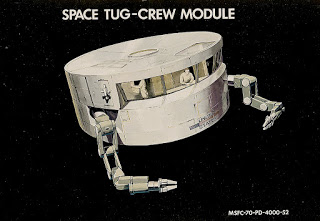 It wasn’t as ungainly looking as the Lunar Module. It resembled a soda can with legs. In some configurations, it looked like a hockey puck with arms. That configuration coincidently resembled the “pod” from film 2001: A Space Odyssey released the same year the tug proposal was unveiled. America has long had a love affair with multipurpose technologies. We love something that can do a lot of functions, maybe not all of them well, but a vehicle that can serve many roles without the need to build individual crafts specific to each task in theory would save costs over the long run. Such was the vision for the Space Tug.
It wasn’t as ungainly looking as the Lunar Module. It resembled a soda can with legs. In some configurations, it looked like a hockey puck with arms. That configuration coincidently resembled the “pod” from film 2001: A Space Odyssey released the same year the tug proposal was unveiled. America has long had a love affair with multipurpose technologies. We love something that can do a lot of functions, maybe not all of them well, but a vehicle that can serve many roles without the need to build individual crafts specific to each task in theory would save costs over the long run. Such was the vision for the Space Tug.
The Lunar Module that carried twelve Americans to the moon’s surface was the first manned spacecraft designed to operate only in the harsh vacuum of space. The Space Tug would have been the second, and unlike the Lunar Module would have been the craft that spent the vast majority of its time performing its work in space. The first real spacecraft, not designed for one-time use, but versatile and reusable. However, true to that Swiss Army Knife versatility, doing what the Lunar Module did was also on the list of functions it was to perform.
It seemed an idea so good that it is a wonder it never materialized. 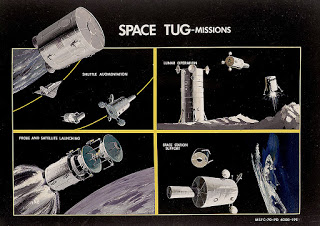 Even today, with our advancements in launch capabilities, and our skills operating in space, the Space Tug concept still has merit. Would it have worked? We will never know. The Grumman Lunar Module took much longer at a higher cost than was anticipated. In the end, it accomplished its singular mission. The Space Tug, for all the simplicity of its name, was much more complicated. Highly configurable, with a variety of differing and often complex missions, seemed more ambitious than practical for the technology of the time.
Even today, with our advancements in launch capabilities, and our skills operating in space, the Space Tug concept still has merit. Would it have worked? We will never know. The Grumman Lunar Module took much longer at a higher cost than was anticipated. In the end, it accomplished its singular mission. The Space Tug, for all the simplicity of its name, was much more complicated. Highly configurable, with a variety of differing and often complex missions, seemed more ambitious than practical for the technology of the time.
The Swiss Army Knife Spacecraft
On the morning of April 13, 1970, Apollo 13 was on its way to the 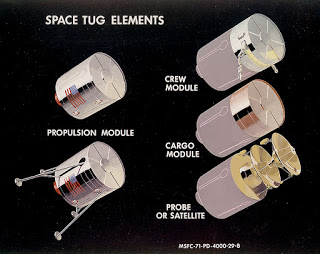 moon. Before the accident that would captivate the nation, a briefing at the Manned Spacecraft Center in Houston was underway. Marion Kitchens, Advanced Missions Program Office, gave a brief overview of the Space Tug. Oh, what a grand vision it was for the Space Tug. Kitchens gave his elevator pitch.
moon. Before the accident that would captivate the nation, a briefing at the Manned Spacecraft Center in Houston was underway. Marion Kitchens, Advanced Missions Program Office, gave a brief overview of the Space Tug. Oh, what a grand vision it was for the Space Tug. Kitchens gave his elevator pitch.
As envisioned, a fleet of tugs would be built. They could operate crewed or uncrewed and would be compatible with other to be built systems, the shuttle, and a space station. It was to be one vital component of a limited set of spacecraft in NASA’s toolbox that shared commonality and compatibility. The key to its design was the configurable nature of the parts. The tug consisted of four components.
- Crew Module
- Cargo Module
- Intelligence Module (electronics)
- Propulsion Module
NASA contracted with North American Rockwell for $250,000 to conduct the study on the Space Tug. Rockwell was the contractor on the Apollo Command and Service Module (CSM) and would build the Space Shuttle. Both of those spacecraft had their fair share of delays and problems during development. The requirements NASA desired for the Space Tug were as challenging as the Space Shuttle and more complex than the CSM.
Key requirements:
- The tug had to operate autonomously, as well as crewed.
- The tug had to be able to be left unattended in space for up to six months and be reactivated within two hours.
- The tug would use cryogenic propulsion that could stay unused, but ready to use after a reasonable period of idle time.
- The tug needed to operate with as little as one crew member (pilot).
- The tug had to be capable of being used up to ten times, with only refueling and reloading of consumables.
- Delivery of a crew to the tug would be via the Space Shuttle.
- After ten uses the Space Tug would be returned to Earth in the Space Shuttle cargo bay for refurbishment and relaunch.
- The crew module should be able to support three or more crew.
- The crew module must have an airlock for astronauts conducting EVAs.
Three categories defined missions that the tug could perform.
- Operations in Low Earth Orbit
- Operation in Orbit around the Moon or on the moon’s surface
- Actions related to robotic interplanetary missions
The Earth-related missions included:
- Inspecting, retrieving, and repairing satellites.
- Placing satellites into an orbit, or readjusting their orbit.
- Placing Space Station modules into a new orbit, or assembling space station modules
- The docking with, and transfer of fuel from containers delivered via shuttle
- Lastly, and perhaps most interesting of the requirements for LEO, space rescue.
Lunar Operations included the following:
- Resupply and support of a lunar space station
- Placement of satellites into lunar orbit
- Transfer of fuel from LEO to lunar orbit
- Delivery of payloads (up to 70,000 lbs.) to the lunar surface
- Delivery of crew to, and from, the lunar surface
- Once again, rescue operations.
The robotic planetary operations support included:
- Assembling modules for planetary missions
- Transfer of probes to a higher orbit for interplanetary injection
The size of the tug would depend on the mission. General specifications envisioned that the tug would be fifteen feet in diameter (to fit in the planned width of the shuttle cargo bay), and as long at 60 feet (the length of the shuttle cargo bay).
The Axe Falls
As outlined in NASA’s requirements, the Space Tug would have provided a game-changing set of capabilities for human and robotic spaceflight. The building of such a versatile craft would have surely had challenges. Those challenges may or may not have been overcome, but they certainly would have advanced space technologies much as the Apollo program had already done. It was not to be.
The 1969 Report of the Space Task Group Report painted several ambitious paths for NASA. Option I was as follows:
“Option I is illustrative of a decision to increase funding dramatically and results in early accomplishment of the major manned and unmanned mission opportunities, including the launch of a manned mission to Mars in the mid-1980s, establishment of an orbiting lunar station, a 50 man earth-orbit space base and a lunar surface base. Funding would rise from the present $4 billion level to $8-10 billion in 1980. The decision to proceed with the development of the space station, Earth-to-orbit shuttle, and the space tug would be required in FY 1971. Firm decisions on other major systems or missions would not be needed until later years; for example, a decision to develop the Mars excursion module for an initial manned Mars expedition would not be required before FY 1974.”
It sought to have the Space Shuttle, a Space Station, and the Space 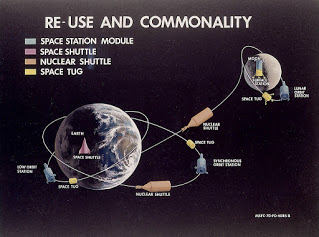 Tug as the foundations of the future space program. The task force went on to say that with the budget constraints imposed on NASA, it would not be viable to continue human spaceflight due to reduced flights and the expense of creating limited specialized hardware for a smaller program. It went on to say that eliminating the human spaceflight program was not in the country’s best interest.
Tug as the foundations of the future space program. The task force went on to say that with the budget constraints imposed on NASA, it would not be viable to continue human spaceflight due to reduced flights and the expense of creating limited specialized hardware for a smaller program. It went on to say that eliminating the human spaceflight program was not in the country’s best interest.
Twelve months later, with Richard Nixon only on the job for a year, all Apollo missions after 17 were canceled. The 1971 FY budget eliminated the Space Tug and Space Station. As for the Space Shuttle, finally, in 1973, Nixon would agree to a trimmed-down Space Shuttle program. He was convinced by his advisors that it would be cheaper and that it would not let the United States cede human spaceflight to the Soviets.
The proposed Space Shuttle would be under tight constraints to stay within budget, yet serve as the prime vehicle for delivery of Department of Defense satellites, and other U.S. satellites and probes. As the expense belt tightened, compromises were made to the shuttle’s design. As the scissors sliced through the rest of NASA’s budget, the grand vision for the Space Tug was left on the cutting floor, but the idea of a tug wasn’t finished yet.
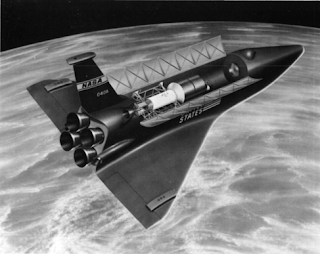 NASA was still receiving proposals for the Space Tug under previous contracts. One of these came from Lockheed Missiles and Space Corporation (Lockheed Martin) in February 1972. It proposed using the existing Agena booster as the space tug. It would not have the full features in the original requirements but did have a few advantages. It was a proven booster with a long track record. Most notably, it happened to be the same type used by Gemini astronauts for docking simulations. Perhaps its most significant advantage was that it required minimal modifications to accommodate the shuttle. Agena’s engine was capable of restarting multiple times, a minimum of fifteen while being controlled remotely. It would utilize a hypergolic fuel, just like the Lunar Module. One of the more intriguing items in the Lockheed proposal was the level of detail for venting the fuel from the Agena depending on the shuttle’s status. Whether on the pad, abort after launch, or on-orbit, it illustrated the complexities of quickly and safely offloading the fuel. The Agena proposal, along with the others, did not move forward.
NASA was still receiving proposals for the Space Tug under previous contracts. One of these came from Lockheed Missiles and Space Corporation (Lockheed Martin) in February 1972. It proposed using the existing Agena booster as the space tug. It would not have the full features in the original requirements but did have a few advantages. It was a proven booster with a long track record. Most notably, it happened to be the same type used by Gemini astronauts for docking simulations. Perhaps its most significant advantage was that it required minimal modifications to accommodate the shuttle. Agena’s engine was capable of restarting multiple times, a minimum of fifteen while being controlled remotely. It would utilize a hypergolic fuel, just like the Lunar Module. One of the more intriguing items in the Lockheed proposal was the level of detail for venting the fuel from the Agena depending on the shuttle’s status. Whether on the pad, abort after launch, or on-orbit, it illustrated the complexities of quickly and safely offloading the fuel. The Agena proposal, along with the others, did not move forward.
Space Tug 2.0
On Valentine’s Day 1973, NASA announced that four firms were selected to conduct another study of a Space Tug system. Those firms were:
- General Dynamics, Convair Aerospace Division
- McDonnell-Douglas Astronautics
- Grumman Aerospace
- Martin Marietta
In the face of NASA’s budget challenges, the big ideas for the tug had evaporated. The “new” Space Tug design relegated it to serve a single purpose. It would become the “third stage” of the Space Shuttle system intended to launch satellites and probes from the shuttle cargo bay to geosynchronous orbit or on interplanetary missions. Before the risks and fragility of the shuttle would manifest itself in two tragedies, NASA has taken a step to put a fully fueled rocket stage in its cargo bay. A concept fraught with risks that seemed to assume the shuttle and the tug would always fly to perfection. This latest version of the Space Tug was now targeted to fly in 1983.
Space Tug 3.0
Only a year later, during the week of the fifth anniversary of the Apollo 11 moon landing in July 1974, NASA awarded another contract for a revised tug study. While the tug’s functionality was going down, the cost of the revamped proposals on the tug was going up. This time, NASA engaged six contractors at a total value of $1.8MM. It was a list of the usual suspects with the additions of Pratt and Whitney and IBM. This study introduced the concept of an interim “mini space tug” that would close the gap until the larger, more capable Space Tug was ready. It was given the name Inertial Upper Stage (IUS) and would be less powerful and safer than the Space Tug. The IUS would utilize a solid rocket motor with a planned arrival in 1980. The Air Force was developing the IUS. NASA, as well as the Department of Defense, would expect to use it on shuttle flights.
Although arriving on the scene a little later than planned, the IUS debuted not on a shuttle, but an expendable rocket for its first flight in 1982. The first shuttle use would come on STS-6, Challenger. Although the IUS did not perform 100% as expected on STS-6, the mission was salvaged, and the communication satellite was successfully deployed.
General Dynamics Convair Aerospace Division had won the rights to build the space tug. The Centaur booster would be the foundational technology used. To no one’s surprise, the new version of the space tug was also late. The latest iteration would not be retrieved and reused after each mission. It was now a single purpose “third stage” component of the space shuttle.
Space Tug 4.0
Though no space tug had flown, it was already on its fourth design. As the calendar turned to 1986, this would finally be the year that the revamped Space Tug, the Shuttle/Centaur, was set to make its inaugural flight, but there were looming concerns. The history of the Centaur program went back a very long way, all the way back to before NASA was formed. Its contribution to rocketry proved that the highly volatile and challenging to manage liquid hydrogen made for a powerful engine. Over the long history of the Centaur program, there would be many more highs than lows. It had a proven track record. However, when it came time to modify the Centaur to be the new space tug and boost shuttle payloads to geosynchronous orbit or off to far-flung destinations in the solar system, there were voices of dissent.
The Shuttle/Centaur combination had earned the nickname “The Death 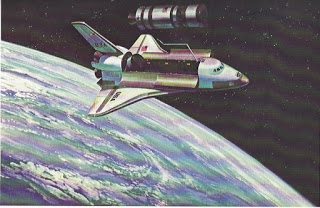 Star” by veteran NASA astronaut and then chief of the astronaut office John Young. This incarnation of the Space Tug was essentially a liquid hydrogen bomb. Nothing more than a thin-skinned aluminum can full of explosive liquid hydrogen sitting in the shuttle’s cargo bay. It would have to endure a bumpy first few minutes of launch until the solid rocket boosters jettisoned from the shuttle. There were additional concerns whether, on an aborted mission, the tug’s fuel could be safely ventilated and done quickly. A space shuttle had never had an aborted “return to launch site” or abort to an alternate landing site. The abort maneuvers were so risky that the first flight of the space shuttle was originally designed to test the return to landing site abort. That mission plan was canceled due to the high risk involved. Thin-skinned rockets full of liquid hydrogen with a crew nearby were nothing new. The Apollo astronauts rode one. The shuttle’s external fuel tank was also loaded with liquid hydrogen and liquid oxygen. However, carrying one as a payload with a crew was a different thing altogether.
Star” by veteran NASA astronaut and then chief of the astronaut office John Young. This incarnation of the Space Tug was essentially a liquid hydrogen bomb. Nothing more than a thin-skinned aluminum can full of explosive liquid hydrogen sitting in the shuttle’s cargo bay. It would have to endure a bumpy first few minutes of launch until the solid rocket boosters jettisoned from the shuttle. There were additional concerns whether, on an aborted mission, the tug’s fuel could be safely ventilated and done quickly. A space shuttle had never had an aborted “return to launch site” or abort to an alternate landing site. The abort maneuvers were so risky that the first flight of the space shuttle was originally designed to test the return to landing site abort. That mission plan was canceled due to the high risk involved. Thin-skinned rockets full of liquid hydrogen with a crew nearby were nothing new. The Apollo astronauts rode one. The shuttle’s external fuel tank was also loaded with liquid hydrogen and liquid oxygen. However, carrying one as a payload with a crew was a different thing altogether.
The first uses of the Shuttle/Centaur tug combination were set to launch in May of 1986. The schedule had been determined before the Challenger accident. As outlined, two shuttles would each carry a tug-equipped probe. The Galileo probe was set to explore Jupiter and its moon, while the Ulysses probe would study the sun and comets. In the era before Challenger, the hubris within NASA was evident. As if the idea of carrying a third stage of liquid hydrogen and all the risks associated in a shuttle bay with crew on board were not enough to stop the plan, there was another requirement needed to make the plan work, and that would push NASA to take yet another risk.
NASA is Ready to go all-in on Centaur
It seemed that as powerful as the Shuttle/Centaur booster was, it needed the shuttle itself to reach the right altitude to ensure success. As the date neared for the inaugural launch of the space tug, the shuttle’s weight was an issue. NASA engineers had trimmed back the shuttle’s ability to reach the desired orbit needed to ensure that the Centaur could do its job. This new limitation necessitated that NASA concede to another risk.
The only way to ensure the success of the Centaur/Galileo payload’s mission to Jupiter would be for the shuttle to burn its three main engines at a higher rate than had ever been done before. The engines would have to fire at 109% of their rated performance for the shuttle to achieve its desired altitude. This new requirement raised immediate concerns with NASA engineers who worried that firing the engines at that level for so long posed risks of potential engine failure. In a worst-case scenario, a possible catastrophic failure would cause loss of crew. Ultimately, the concession was made, and the Centaur Space Tug was going to finally fly and launch two of NASA’s premier robotic probes.
Challenger is Lost and with it, the Space Tug Vision.
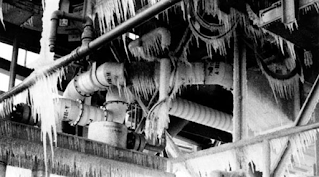 Florida was experiencing an unusual wave of freezing temperatures on Tuesday morning January 26, 1986. At the Kennedy Space Center in Florida, the Space Shuttle Challenger was set to liftoff. Delayed briefly until 11:39 AM EST due to ice on the launch pad. It was not carrying the space tug, but a satellite that used the current Inertial Upper Stage (IUS) booster. Just seventy-three seconds after launch, what appeared at first to be an explosion took place. The crew, vehicle, and payload were lost. An accident investigation would reveal that the accident’s cause was the failure of the solid rocket motor O-rings due to the frigid temperatures. A botched weather forecast prevented the shuttle from launching just two days before under ideal conditions. A mishap with a sensor and bolt on the hatch scrubbed the launch the day before the accident. The result was putting Challenger in crosshairs of a disaster on that fateful Tuesday in late January. Had Challenger launched without incident, another shuttle accident was inevitable and did occur with Columbia. However, the Shuttle/Centaur combination was also a potential accident waiting in the wings. The Challenger accident canceled the Shuttle/Centaur program.
Florida was experiencing an unusual wave of freezing temperatures on Tuesday morning January 26, 1986. At the Kennedy Space Center in Florida, the Space Shuttle Challenger was set to liftoff. Delayed briefly until 11:39 AM EST due to ice on the launch pad. It was not carrying the space tug, but a satellite that used the current Inertial Upper Stage (IUS) booster. Just seventy-three seconds after launch, what appeared at first to be an explosion took place. The crew, vehicle, and payload were lost. An accident investigation would reveal that the accident’s cause was the failure of the solid rocket motor O-rings due to the frigid temperatures. A botched weather forecast prevented the shuttle from launching just two days before under ideal conditions. A mishap with a sensor and bolt on the hatch scrubbed the launch the day before the accident. The result was putting Challenger in crosshairs of a disaster on that fateful Tuesday in late January. Had Challenger launched without incident, another shuttle accident was inevitable and did occur with Columbia. However, the Shuttle/Centaur combination was also a potential accident waiting in the wings. The Challenger accident canceled the Shuttle/Centaur program.
The accident would reveal the true nature of the Space Shuttle. It was not an operational spacecraft, but an experimental vehicle that pushed the extremes of machine performance and engineering. Hundreds of modifications were made to the remaining shuttles before they could fly again to make them safer, but not fail-safe. The culture at NASA that allowed the shuttle launch was the same culture ready to fly the Shuttle/Centaur Space Tug.
The shuttle program had to stand down for three years following the accident. Both Galileo and Ulysses would not launch in May 1986. Eventually, both would fly on the shuttle. Galileo would fly in 1989 on Space Shuttle Atlantis, Ulysses would fly on Space Shuttle Discovery in 1990. Both Galileo and Ulysses would use the IUS.
Aftermath
It was a bit of irony that the man, who was the Vice President under Eisenhower and sold the idea of NASA, would be the architect of a plan that would keep American astronauts circling the Earth at an average distance of 250 miles for fifty years and counting. The distance humans have traveled from the surface of the Earth since the end of the Apollo era? Roughly the distance from the White House in Washington, D.C. to the Grumman Factory on Long Island, where the Lunar Modules were built. In December 1972, after Apollo 17 departed the moon, Nixon accurately predicted that “This may be the last time in this century that men will walk on the Moon.”
Despite NASA’s budget restrictions, the ’70s did bring other successes to NASA; all were leftovers from the Apollo program. There would be Skylab, America’s first space station, and a mostly symbolic docking in space between an Apollo spacecraft and a Soviet Soyuz capsule. The Apollo-Soyuz Test Project would officially end the Apollo era almost six years to the day that Apollo 11 returned from its historic mission.
The original triad of capabilities, a Space Shuttle, Space Station, and Space Tug was not to be. The budget would not support all three and barely supported a pared-down Space Shuttle. The shuttle itself would be late on delivery, wouldn’t fly until 1981, six years after the last Apollo flight. Five years later, it would experience the first of two accidents that would cost the lives of fourteen astronauts.
A planned ‘70’s Skylab rescue mission by the Space Shuttle that Apollo 13 Lunar Module pilot Fred Haise had trained for would be scrubbed due to the delayed shuttle. Skylab, a temporary destination for the shuttle until a new space station could be built, would come crashing down to Earth. The Space Shuttle would dock with a Soviet/Russian Space Station, Mir, from 1994 to 1998 before the International Space Station saw its first shuttle visit in November 2000.
As for the Space Tug, the grand vision would never materialize. No one will ever know what could have been if such a versatile spacecraft had been built. If history were any precedent, the original Space Tug would have been more complex than the Lunar Module, taken longer to make, cost far more than planned, and likely canceled somewhere along its path to completion.
In 2015, the closest thing to the original Space Tug was put forth in a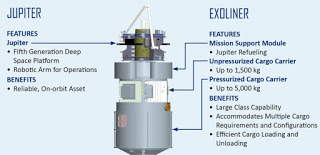 proposal by Lockheed Martin as part of NASA’s Commercial Resupply Service for the International Space Station. Lockheed’s Jupiter and Exoliner Space Tug would not carry a crew. However, it did have extended capabilities to resupply the Space Station; it could be reused and refueled and had a robotic arm for deploying satellites as well as swapping out its components. Lockheed’s proposal did not make the cut. The term “space tug” would become a generic term applied to cargo resupply vehicles. The European Space Agency had its Jules Verne tug, Russia, and Japan their versions of tugs. All of them fell into the class of Automated Transfer Vehicles (ATV) and bore little resemblance to the 1968 multipurpose tug.
proposal by Lockheed Martin as part of NASA’s Commercial Resupply Service for the International Space Station. Lockheed’s Jupiter and Exoliner Space Tug would not carry a crew. However, it did have extended capabilities to resupply the Space Station; it could be reused and refueled and had a robotic arm for deploying satellites as well as swapping out its components. Lockheed’s proposal did not make the cut. The term “space tug” would become a generic term applied to cargo resupply vehicles. The European Space Agency had its Jules Verne tug, Russia, and Japan their versions of tugs. All of them fell into the class of Automated Transfer Vehicles (ATV) and bore little resemblance to the 1968 multipurpose tug.
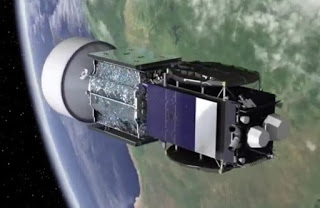 Northrop Grumman’s subsidiary SpaceLogistics built a vehicle that performed an actual “tugboat” function. In early 2020, Northrop’s spacecraft called the Mission Extension Vehicle (MEV) successfully executed a first of its kind docking and life extension of a low-on fuel satellite. Each MEV has a fifteen-year life and the ability to rendezvous with multiple on-orbit satellites. The second MEV, MEV-2, is scheduled to launch on an Arianespace rocket in August 2020. That MEV will deploy a communications satellite and then will be available to service other vehicles as needed. Future Mission Extension Vehicle’s design will have the ability to attach “booster packs” to multiple satellites from one MEV. Northrop Grumman’s Mission Extension Vehicle was one of the capabilities envisioned in NASA’s 1968 proposal.
Northrop Grumman’s subsidiary SpaceLogistics built a vehicle that performed an actual “tugboat” function. In early 2020, Northrop’s spacecraft called the Mission Extension Vehicle (MEV) successfully executed a first of its kind docking and life extension of a low-on fuel satellite. Each MEV has a fifteen-year life and the ability to rendezvous with multiple on-orbit satellites. The second MEV, MEV-2, is scheduled to launch on an Arianespace rocket in August 2020. That MEV will deploy a communications satellite and then will be available to service other vehicles as needed. Future Mission Extension Vehicle’s design will have the ability to attach “booster packs” to multiple satellites from one MEV. Northrop Grumman’s Mission Extension Vehicle was one of the capabilities envisioned in NASA’s 1968 proposal.
For its time, the tug would have encountered similar issues to the Shuttle/Centaur. Its cryogenic propulsion posed the same risks. Since the tug was meant to be refueled, the shuttle would need to carry the fuel containers to orbit. If we think about the tug in today’s world, a new version would learn from the past lessons, though some of those ghosts of the past remain. Today’s vehicles employ better design methods, have far better technology, and use lower-cost reusable rockets to get a tug into space and get it continually refueled. The missing component was the shuttle’s ability to return the tug to Earth for refurbishment and reuse.
Fast forward to today. We now come to the end of the story. A grand vision for the most important spacecraft never built will always remain the stuff of science fiction writers. One can only hope that one day perhaps SpaceX or Blue Origin will resurrect the dream of the first space tug, call it the Phoenix as it rises from forgotten history to reality.
— The End —
Copyright 2020 Michael Patrick O’Hara, All Right Reserved
Sources:
Thanks to the NASA History Office at the Marshall Space Flight Center for their assistance.
Harrison, E.F., & Pritchard, E.B. (June 30, 1970), “USE OF SPACE TUG TO INCREASE PAYLOAD CAPABILITY OF SPACE SHUTTLE” NASA TN D-6241, NASA Langley Research Center
Kitchens, Marion. (April 13, 1970), “Space Tug Briefing”, NASA Manned Spacecraft Center
Lodgson, John. (2015), “After Apollo: Richard Nixon and the American Space Program”, Palgrave-MacMillan
Lockheed Missiles and Space Company (February 25, 1972), “Shuttle/Agena Study”, LMSC Space Systems Division
Logsdon, John, “Ten Presidents and NASA”, NASA
available from http://www.nasa.gov/50th/50th_magazine/10presidents.html
Mangels, J. (December 11, 2011), “Long-forgotten Shuttle/Centaur boosted Cleveland’s NASA center into manned space program and controversy”, The Cleveland Plain Dealer
NASA (1969), “The Post-Apollo Space Program: Directions for the Future September 1969”, NASA
NASA Public Affairs Office, Manned Spacecraft Center (November 4, 1970), “Space Tug Study – Fact Sheet”, NASA
NASA Release 73-19 (February 13, 1973), “MSFC Forms Space Tug Task Team”, NASA Marshall Space Flight Center
NASA Release 73.24 (February 14, 1973), “Four Firms to Study Space Tug Systems”, NASA HQ
NASA Release 74-211 (July 26, 1974), “Space Study Contracts Awarded”, NASA HQ
North American Rockwell (March 22, 1971), “Pre-Phase A Study for an Analysis of a Reusable Space Tug Final Report” Volumes 1-6, North American Rockwell Space Division
Northrup Grumman, “Mission Extension Vehicle”, Northrop Grumman, available from https://www.northropgrumman.com/space/mission-extension-vehicle/
von Tiesenhausen, G., & Sharpe, T. (1970), “Space Flight Evolution”, NASA Marshall Space Flight Center Advanced Systems Analysis Office
